India's Third Giant Leap
This Could be One of the Biggest Opportunities for Investors
- Home
- Views On News
- Sep 27, 2021 - 5 Indian Banks with the Lowest NPAs. Here's How they Did It...
5 Indian Banks with the Lowest NPAs. Here's How they Did It...
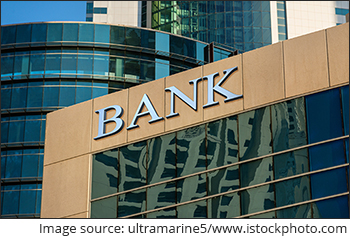
Growing NPAs (non performing assets) have become an unending nightmare for the Indian banking sector due to the pandemic.
While some banks have implemented measures to mitigate this, others may be at the beginning of a new NPA cycle.
Although there is no 'acceptable limit' for NPAs, it's considered manageable if the bank's NPAs are under 3%.
Here are 5 Indian banks with the lowest NPAs.
#1 HDFC Bank
HDFC Bank is India's largest private sector bank by assets and by market capitalisation.
The bank, despite having less than 10% share of the banking sector, is one of the most respected banks in the country.
When it comes to servicing retail customers, the bank relies on the model of wide franchise and low-cost deposit base. This ensures good pricing power and sustainability of above average NIMs (net interest margins).
That sourcing home loans for parent HDFC is a huge advantage for the bank cannot be undermined. But even otherwise being extremely conservative with margins and provisioning policies has been very rewarding.
It thus comes as no surprise to us that HDFC Bank holds the distinction of reporting more than 20% YoY profit growth every quarter for over 40 quarters. All this while, its net NPAs have never crossed 0.5% of loans!
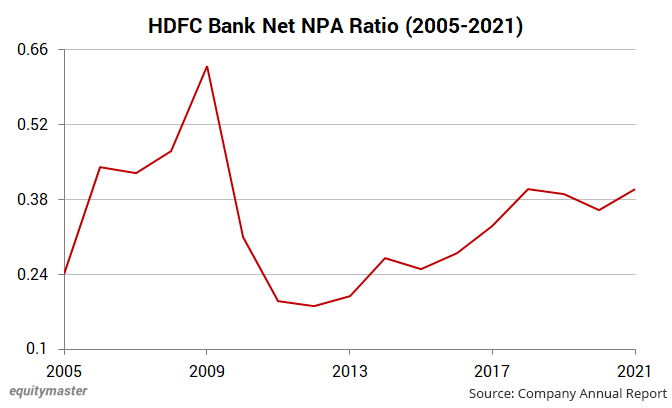
Even in the year 2020, where the entire banking industry was hit due to the pandemic, HDFC Bank reached out to large corporates for their funding requirements, which it could do because of its strong balance sheet.
In its latest quarterly results, the bank's net NPA ratio stood at 0.48%.
Its bad-loan write-offs doubled to Rs 31 bn from Rs 15 bn in the June 2020 quarter. It also offloaded its non-performing assets (NPAs) amounting to Rs 18 bn to maintain a robust asset quality profile.
#2 IndusInd Bank
Another private sector bank, which has come a long way, and has a strong resemblance to HDFC Bank in the past few years is IndusInd Bank.
The bank was incorporated around the same as HDFC Bank, in 1994, by Srichand Hinduja, one of the promoters of the Hinduja group.
It was not until 2008, when Romesh Sobti along with some of his colleagues at ABN Amro NV, took over the reins of IndusInd bank, that the entity gained some vigour.
Despite above average loan growth, even in the most difficult of times, IndusInd Bank has not compromised on its asset quality.
The bank's net NPA ratio, like in the case of HDFC Bank, has consistently stayed below 0.5% over the past five years.
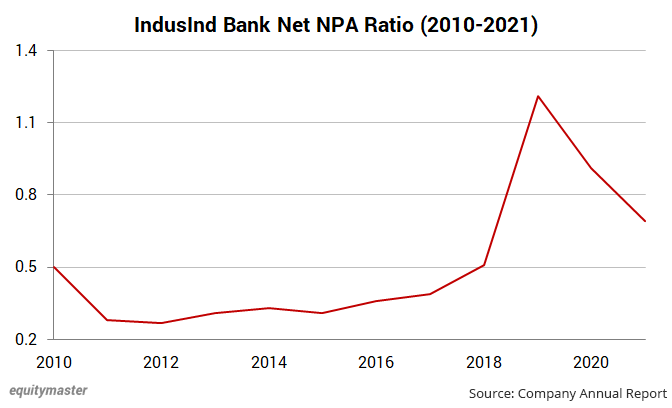
The bank also has a leadership position in certain retail asset classes with a pan India franchise which has strengthened its ability to manage the asset quality in those segments.
In its latest quarterly results, the bank's gross non-performing assets (GNPAs) stood at 2.88% as it was impacted by the second wave of Covid-19 while the net NPA ratio rose 15 basis points sequentially to 0.84%.
However, the impact of the same was mitigated by the fact that the bank carries unutilised provisions of Rs 20.5 bn (not a part of the provision coverage) that can be utilised in case it sees further slippages.
#3 Kotak Bank
Third on the list is Kotak Mahindra Bank.
The bank is the third largest Indian private sector bank by market capitalisation. It offers products and financial services for corporate and retail customers in the areas of personal finance, investment banking, life insurance, and wealth management.
Over the last couple of years, Kotak Mahindra Bank has demonstrated a highly consistent and healthy historical track record.
The bank has sustained net NPAs below 1.5% of its loan book all these years. Its institutional memory of tiding over one credit crisis after the other for nearly 25 years has also served it well.
The bank's loan book has grown at a CAGR of over 25% over the past decade. This has been supported by a healthy contribution of low-cost deposits (current and savings accounts).
In its latest quarterly results, the bank's asset quality weakened as gross NPAs stood at 3.56%. However, net NPAs still came in below 1.5% at 1.28%.
The bank's Covid-19 related provisions stand at Rs 12.8 bn in accordance with the Resolution Framework for Covid-19 and MSME announced by RBI. It has also implemented a total restructuring of Rs 5.5 bn as of 30 June 2021.
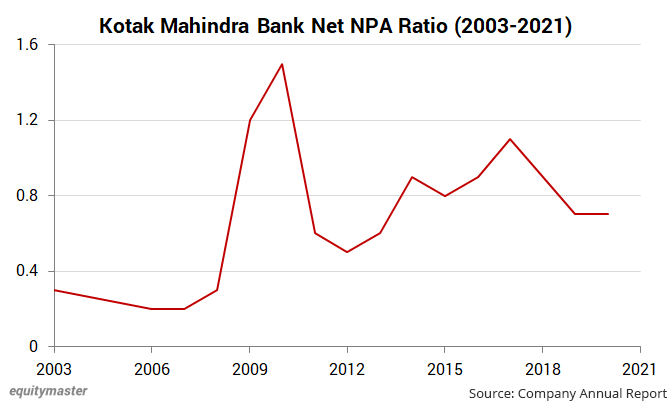
#4 Federal Bank
Federal Bank (FBL) is another private sector bank with robust asset quality.
The bank is headquartered in Kerala and handles more than 15% of India's total inward remittances.
It has a customer base of over 10 m, including 1.5 m NRI customers and a large network of remittance partners across the world.
The bank constantly improves its collection and recovery architecture to improve its asset quality. It also uses various analytics tools to predict the propensity to default and collection score of the borrowers.
During the financial year 2021, while there was large increase in NPAs in almost all banks, Federal Bank exhibited a decline in NPAs due to diligent selection of borrowers.
Its slippage ratio also came in at 1.6%, lower than 1.7% in 2020 and the management has guided further similar slippage ratio for FY22, in line with its historical trend.
In the latest quarterly results, the bank's gross NPAs rose to 3.5% while its net NPAs increased marginally to 1.23% largely due to the Covid-19 related challenges faced by borrowers.
However, the bank has reasonably provided for the Covid-19 related impact in 2021 and the June 2021 quarter for restructuring and the subsequent rise in delinquencies.
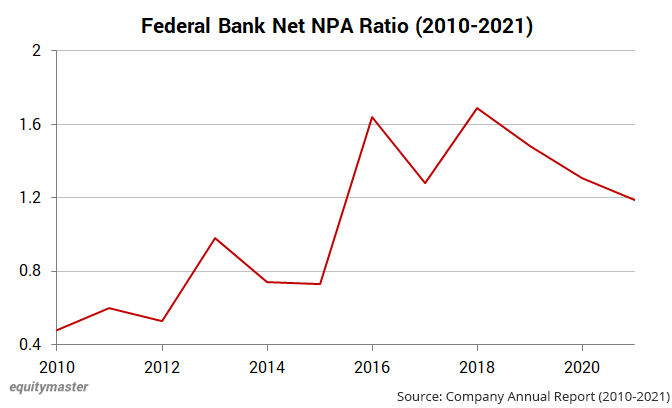
#5 ICICI Bank
ICICI Bank is one of the three systemically important banks in India with a 7% market share in the banking sector.
Along with its subsidiaries, the bank has a wide presence across various financial services verticals such as life insurance, general insurance, merchant banking, asset management, etc, with a leadership position in many of these businesses.
The bank's net NPAs have stayed around 2% in the last decade with an exception in the years 2017 and 2018 where it saw high additions to NPAs in its corporate and small and medium enterprises loan portfolio.
With the onset of Covid-19 during 2021, the bank did see an impact on asset quality across segments, resulting in an uptick in the overall fresh NPAs.
However, despite a rise in slippages, the net NPAs remained lower at 1.14% as on 31 March 2021 against 1.54% as on 31 March 2020.
The bank has also changed its provisioning policy on non-performing assets for certain loan categories to make it more conservative resulting in higher provisions.
In its latest quarterly results, the bank reported a net NPA ratio of 1.16%.
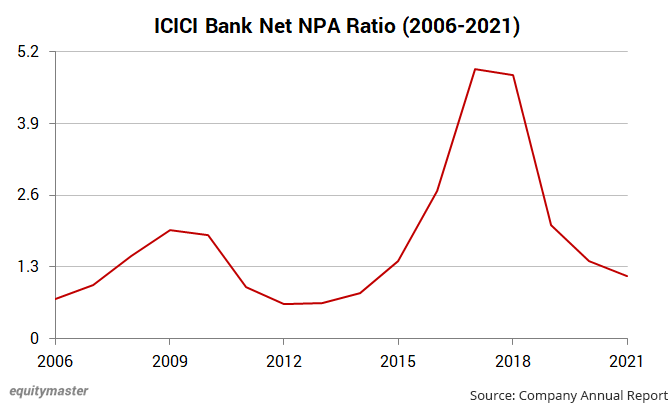
To conclude...
A mounting level of NPAs in the banking sector can severely affect the economy in many ways. If NPAs are not properly managed, it can cause financial and economic degradation which in turn can signal an adverse investment climate.
With unpaid corporate loans at an all-time high in India, the government has set up a bad bank to resolve such loans, paving the way for a major clean-up of the banking system.
The new institution will take over bad loans from commercial banks amounting to Rs 2 bn, a quarter of the total stressed loans in the country.
While there is no direct capital infusion by the government, it has mobilised capital from eight public sector banks (PSBs) - Canara Bank, Bank of Baroda, Punjab National Bank, Bank of India, Bank of Maharashtra, SBI, Union Bank of India, and Indian Bank.
How this bad bank pans out remains to be seen. Meanwhile, stay tuned for more updates from this space.
To know what's moving the Indian stock markets today, check out the most recent share market updates here.
Disclaimer: This article is for information purposes only. It is not a stock recommendation and should not be treated as such. Learn more about our recommendation services here...


Equitymaster requests your view! Post a comment on "5 Indian Banks with the Lowest NPAs. Here's How they Did It...". Click here!
Comments are moderated by Equitymaster, in accordance with the Terms of Use, and may not appear
on this article until they have been reviewed and deemed appropriate for posting.
In the meantime, you may want to share this article with your friends!